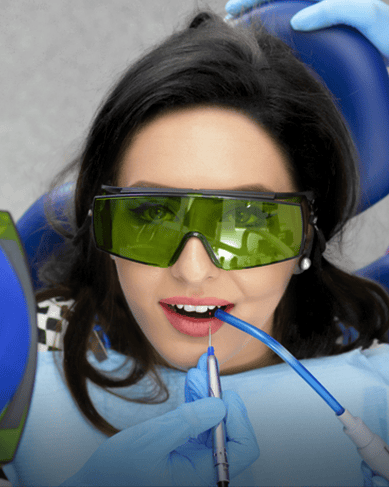To be specific, laser dentistry refers to light energy that is a thin beam of extremely focused light, exposed to a particular tissue so that it can be molded or eliminated from the mouth. Throughout the world, laser dentistry is being used for conducting numerous treatments, ranging from simple procedures to rather complex dental procedures.
Some of the most common treatments that are done with laser dentistry are:
- Teeth whitening
- Treatment of gum diseases
- Treatment of tooth decay
- Treatment of hypersensitivity

